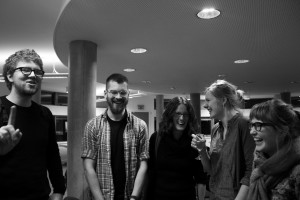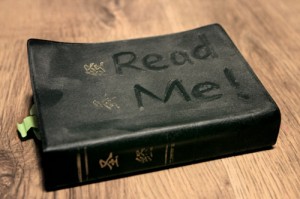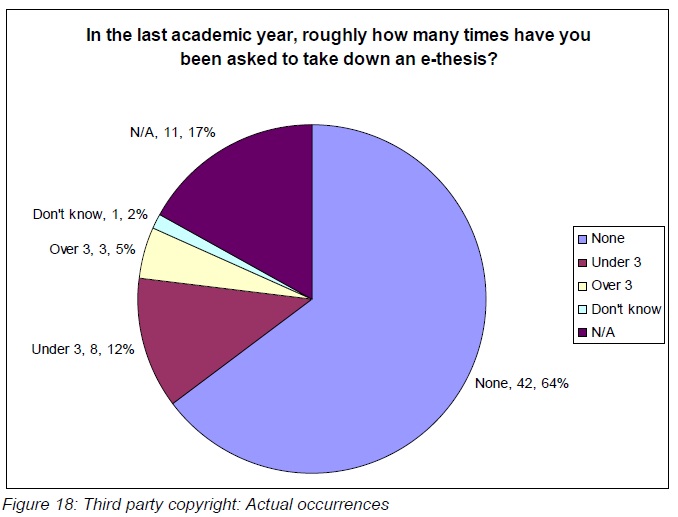 This blog post by Hasan Niyazi (independent art history blogger/originator of the ‘3 Pipe Problem’ blog) is part of a series that asks after new forms of scholarship and demonstrates how academic out-put is changing in the digital age.
This blog post by Hasan Niyazi (independent art history blogger/originator of the ‘3 Pipe Problem’ blog) is part of a series that asks after new forms of scholarship and demonstrates how academic out-put is changing in the digital age.
From blogs like the Thesis Whisperer to Twitter communities like #PhDchat there are a number of ways in which academics are harnessing digital communication technology to support each other and their work within and without institutions. And some are even outright reinventing what academic scholarship might be. We are well beyond the early phase of academic listserves and blogs and into a – perhaps third wave – of digital discourse design.
In this series I’ve invited the people responsible for these types of projects to share what their intentions were when they established them. How their projects have changed the way they (and we, as participants) work, research, share, support and interact with each other as global colleagues. And how they might describe what the emerging skill-sets are and their benefits and pitfalls.
In the year 1500, the German artist Albrecht Dürer inscribed the following on a self-portrait:
“I, Albrecht Dürer of Nuremberg portrayed myself in everlasting colours aged twenty-eight years.”
Writers of art history view this work as a significant turning point, or “moment” in Western civilisation.[1] The wildly gifted artist portrayed himself in not only a manner resembling traditional depictions of Christ, but added the force of his own presence to the work with the inscription, including his own “AD” monogram, which to many reading (to this day) recalled “Anno Domini” – the Year of Our Lord. From a perspective perhaps best granted by hindsight, Dürer’s inscribed portrait heralded the age of the individual. Dürer may have been the possessor of a large ego, yet he was also a capable disseminator of his work. His engravings and etchings, mechanically reproduced as prints on paper traveled across Europe, spreading the fame of his skill, and often encouraging copyists.[2]
Dürer not only embraced technology to aid in the distribution of his work, he was also an able networker. Eager to reach out to others, Dürer traveled to meet and learn from other artists. He sought Martin Schongauer and Andrea Mantegna, missing both shortly after their death, but did meet an aged Giovanni Bellini in Venice. By 1515, Dürer sought to exchange gifts with the most celebrated Italian artist of the age, Raphael of Urbino, then at the height of his powers in Rome, his career overshadowing both Michelangelo and Leonardo da Vinci.[3]
In whatever context one seeks to frame Dürer’s life and career, it is evident that he was successful at spreading an awareness of himself and his work across Europe. I wished to introduce Dürer’s use of technology to spread his work, and seeking personal connections to improve his knowledge as a precursor to a discussion about blogging. At the very least, Dürer’s example provides some interesting and relevant historical parallels.
I have been asked by Charlotte Frost to provide an account of my experiences in the blogosphere, exploring Renaissance art history in a level of detail than was not occurring in an open forum on the web. I presently spend my days working as a clinician and most nights reading and writing about art history. In late 2009, after having spent over a decade online, on message boards and advice forums dedicated to technology, I found my mind always wandering back to art history, a topic I had studied at a younger age. Hence, with little more than a vague notion of wanting to write about “cool art stuff” I began “art history blogging.” I created a free blog using Google’s “Blogger” platform, which I found favourable compared to WordPress as it allowed users full access to the blog’s underlying html code, allowing me to learn about this along the way. Three years on, I find myself pleasantly occupied. My clinical work continues, yet my reading and writing in art history has wrought great changes to me and my writing. I maintain regular contact with important Renaissance scholars, and am working on an ambitious project dedicated to the artist Raphael.
My blog, 3 Pipe Problem (3PP), became a platform to disseminate the idea that a more detailed appreciation of Renaissance art history is not restricted to those who can access universities, expensive books and journals, or belong to a particular community. Many bloggers have a personal motivation. For some, this motivation comes foremost as an intellectual pursuit that captivates the mind. Applying it to art history, I sought to understand its narrative of the past, and the evidence that had formed the common perception of this period in history.

Raphael’s famous self-portrait at the Uffizi has a complex attribution history, with a number of scholars disagreeing on it author, and likely date of creation.
This search for understanding – to my mind at least – arrived in its purest form when examining the attribution of a Renaissance artwork. It is a magical experience to walk into a gallery and stand before a work on panel or canvas labelled to be by the great Raphael, Leonardo, Titian or Giorgione (etc). Purchasing the catalogues offered by museums and galleries for these works often brushes past attribution issues entirely. It is only when one is brave enough to wade into the scholarly literature that we find an almost endless procession of heated debate about the authorship of a work. In Raphael studies in particular, this discussion is protracted across many works attributed to an artist whose style dramatically changed across the short span of his professional life.
Because Raphael had acquired great fame during his own lifetime, we are blessed with a greater number of surviving sources on his movements and actions than can be found for other artists of the period. It is the evaluation of these sources, and the physical characteristics of the works themselves that enable us to describe a painting “by Raphael” in full. Indeed in the scope of Renaissance workshop, Raphael’s involvement in a particular work needs to measured against visual evidence gleaned from observation of the work itself, and related technical images and preparatory works – a mode of analysis traditionally known as connoisseurship.
It is the distillation of these complex quantities of information that I attempt to bring to my posts at 3PP, and inform my work on the Open Raphael Online project. In doing this work online, I found I gained the most when openly sharing my learning experiences as they happened. The most efficient way to do this was via the social media platform twitter, where I encountered a range of individuals with similar interests, including professionals and students engaged in the study of art and history. This resulted in an ongoing exchange of information and resources, and a pleasing type of social interaction that occurs when one encounters kindred spirits.
In November 2012, I was pleased to be awarded the honour of representing “art history bloggers” at the Florens cultural heritage event in Florence. Traveling back to the heart of the Renaissance is a perennially emotional experience, and in my mind the city of innovation and endeavor that Florence once was seeks to regain its place again, with an increasing number of progressive online voices discussing the art and culture of the city.

Being part of the team of bloggers covering the Florens2012 event was a rewarding experience, providing insights into the great potential for new media to inform and promote a deeper experience of Italian culture than is presently being achieved.
What is blogging and where is it headed?
It is at times daunting finding oneself working in a space populated by very few others, and without a real sense of the activity being viable as anything other than an intellectual exercise. The blogs I admire the most are mostly written by academics as an independent exercise that fed off their experiences in teaching and research. Although I had started blogging “for fun” I quickly found myself wanting to occupy a similar space as far as the quality of detail and critical analysis being offered at blogs such as Thony Christie’s The Renaissance Mathematicus and Monica Bowen’s Alberti’s Window. Hence, each post became a research project in its own right. I would often start at scratch, or from an idea sparked by another blog post or discussion on twitter and develop a post from there. This process allowed me to further develop my own style, and improved my research skills – which of course are still evolving.
There is an increasing amount of discussion about the roles bloggers have in the space traditionally occupied by specialists and journalists. A recent post at the London School of Economics (LSE) Impact Blog specified “academic blogging” as defining a new space between academic writing and journalism.[4]
With specific reference to art history, the 2012 Kress Foundation report into digital art history and its research centers also identified the role of an “instigator”:
“A more radical suggestion is to bring in “instigators” or individuals from outside the research center who possess a unique set of technology, humanities, and people skills. Their role would be to push against institutional barriers without being intimidating to others nor easily thwarted themselves.”[5]
These descriptions seemed to describe blogging being recognised as a new space, and sought to address why blogging exists and whether it is important. It also became apparent that communicating ideas within the context of a blog also demanded a new mode of language, where the individual acting as “instigator” must be able to address both specialists and the interested public alike. This form of writing has no real precedent in art history, the closest analogues being reviews of exhibitions or publications penned by art critics/historians in newspapers and magazines.
Anthropological excursus
Of the various academic disciplines that are bravely experimenting with or observing blogging, that which tended to more completely grasp the “what and why” or meta of blogging was the field of media anthropology, and the related area of cyber-anthropology.[6] This relatively new branch of study, which seems to have forged its presence somewhere between media studies and the social sciences has burgeoned into a thriving discipline, with a proliferation of case studies demonstrating use of blogging and social media being used in social activism. The events around the Arab Spring and Occupy movements seem to be of most enduring interest to the media anthropologists I have encountered, with those tracing the impact of blogging in a broader, cultural sense quite rare.[7]
While many studies/books (of varying quality) can be found on the impact of blogging in a political sense, primarily in the American context, there is at present no study that seeks to track the impact of blogging on elements of cultural discourse, which is arguably the most globally inclusive human activity.[8] From art and archaeology, to regional variances in customs and language, the definition of “culture” is now so broad and complex, that such a study would be daunting to any investigator considering tackling its interaction with the forms of new media represented by blogging and social media. Until such studies are completed, this small excursus, embedded within this account of my role as an art history blogger, will hopefully be a marker for the consideration of new media’s impact on cultural discourse in an anthropological sense.
Conclusion – evolving beyond the primordial ooze
We are still in the primordial ooze of blogging and social media acting to serve a mired field of study, which art history can unfortunately be described in certain contexts. In some cases, quality blogs are helping to demystify aspects of cultural discourse to a global audience.
It is always pleasant to hear from readers who have been to museums and have questioned the assigned label of a work, and have been unsatisfied with the explanations offered in their catalogues. This desire to seek more detail in an independent sense is the true blessing of the information age. This gift of access to knowledge the web can provide recalls the famous, if not grandiose point made by Timothy Leary in Pataphysics in 1990,
“Today the role of the philosopher [and the artist, we might add] is to personalize, popularize, and humanize computer ideas so that people can feel comfortable with them…In every generation I’ve been part of a group of people who, like Prometheus, have wrestled with the power in order to hand it back to the individual.”[9]
Comparisons to mythological titans aside, what can be taken from Leary’s statement is that those with experience navigating the seemingly disparate fields of technology and cultural historiography are ideally suited to analyse and interpret the seemingly rapid changes being experienced by all disciplines defined by large slabs of text and images, traditionally locked within the confines of books. Blogging is just one of many available means of re-purposing and amplifying these images and texts to a more global, and potentially dynamic audience.
I would like to emphasise that my example represents a combination of circumstances that has occurred naturally, and is only a snapshot taken at this point in time. At present, art history blogging exists because it does, and discussing it from the perspective of becoming a viable business model seems a point no one is yet prepared to deliberate on. For academics and students trying to figure out how a blog may fit into their workflow, there is no easy answer other than trying it and finding what works for you, and ruling out what does not.
Ultimately, blogging does not need to supplement anything else. It is its own form of expression, requiring a mixture of skills. Blogging is a mode of communication where any individual with a passion to work hard and have their voice heard can participate in a global dialogue that attracts scholars and laypersons alike. Art, culture and knowledge transcends boundaries, and so does the web. As such, they are a perfect match.
References
1. Koerner, JL. The Moment of Self-Potraiture in German Renaissance Art. University of Chicago Press. 1997. pp.40-46 preview available at Google Books link ; the author is aware of the antecedent self portrait by van Eyck and its comparatively boastful frame inscription. Less is known about Jan van Eyck’s travels and how widely his work was disseminated.
2. Pon, L. Raphael, Dürer and Marcantonio Raimondi – Copying in the Italian Renaissance. Yale University Press. 2004. pp.62-68.
3. Nesselrath, A. Raphael’s Gift to Dürer. Master Drawings. Vol. 31. No. 4. Essays in Memory of Jacob Bean (1923-1992). Winter, 1993. pp. 376-389 JSTOR link
4. Carrigan, M. By opening up a distinctive space between academic research and journalism, a thriving academic blogosphere mediates between them. London School of Economics Impact Blog. February 4 2013. Accessed March 6 2013. link
5. Zorich, D. Transitioning to a Digital World: Art History, Its Research Centers, and Digital Scholarship. Kress Foundation website June 1. 2012. Accessed March 6 2013. link
6. Rothenbuhler, E. Media Anthropology as a Field of Interdisciplinary Contact. E-Seminar October 22 – November 05 2008, European Association of Social Anthropologists (EASA), Media Anthropology Network. http://www.media-anthropology.net nb. An excellent overview of media anthropology and its history as a field of study. (pdf link) ; another recommended overview paper is presented by Mihai Coman (pdf link) ; A foundational article introducing the concept of “cyber-anthropology” was published in 2005 by Libin and Libin: Cyber anthropology: a new study on human and technological co-evolution. Studies in Health Technology and Informatics. 2005. 118. pp. 146-55. (link)
7. There are a number of well known blogs dedicated to anthropology – Savage Minds, and its blogroll is a great starting point (link). Less prevalent are blogs dedicated to media anthropology, with the site maintained by Dr. John Postill a notable source of information and resources (link). Blogs exploring specific examples of culture and their impact in a new media and anthropological context are more rare at this stage. Some quality examples include:
- University College London has an project index(link) and blog(link) exploring the anthropology of social media.
- Cyber Anthropology – a blog maintained by Diana Harrelson, exploring the anthropology of social media, gaming and online communities (link) ;
- The Cultural Magazine (link), primarily in Italian, with articles in French and English, maintained by Melissa Pignatelli. Explores cultural anthropology and social media’s impact on contemporary society.
8. Baldwin, J. (ed.) Redefining Culture: Perspectives Across The Disciplines. Routledge. 2006. This landmark publication identified over 300 prevailing definitions of “culture”, highlighting the challenges in demarcating the parameters of culture as a field of study. For more on this in a new media and reporting context see Niyazi, H. The convergence of culture and new media – Florens 2012. Posted at 3 Pipe Problem. November 22 2012. (link)
9. Leary, T. Pataphysics quote is included in premable of Chaos and Cyberculture. 1994 edition online at archive.org (link)
 Consider being generous. Awhile ago there was a discussion about Tweeting during conference panels and whether doing so was making scholars’ research public outside of their established intentions. Academics are generally trained to be very protective of their ideas, their data, and their scholarship: there’s a reason for the term “intellectual property.” The inverse would be to apply the ideas of generosity and publicness to scholarship.
Consider being generous. Awhile ago there was a discussion about Tweeting during conference panels and whether doing so was making scholars’ research public outside of their established intentions. Academics are generally trained to be very protective of their ideas, their data, and their scholarship: there’s a reason for the term “intellectual property.” The inverse would be to apply the ideas of generosity and publicness to scholarship.







 picture by my Dad
picture by my Dad 




 Image from Mochimochiland.com
Image from Mochimochiland.com 
 http://www.flickr.com/photos/sindykids/3989867654/
http://www.flickr.com/photos/sindykids/3989867654/ 
 The editors, taken by Imke van Heerden on 3 February 2012, University of York. From left: James Fraser, Ben Madden (postcolonial hanger-on), Isabelle Hesse, Anna Bocking-Welch, and me (Sarah Pett).
The editors, taken by Imke van Heerden on 3 February 2012, University of York. From left: James Fraser, Ben Madden (postcolonial hanger-on), Isabelle Hesse, Anna Bocking-Welch, and me (Sarah Pett). 









